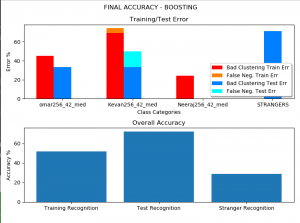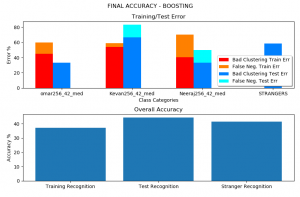This week me and Neeraj pair programmed to re-code our PCA. We finished that and tested and compared those results between the old PCA and new PCA in terms of the quality of the reconstructions as we varied the eigenvectors that were used. We then used our existing LDA code and interfaced that code with this new PCA in order to generate a new set of fisherfaces. Neeraj finished testing that fisherfaces and we got very good results with that. Neeraj and Kevan are now working on combining that with our existing codebase.
We are on-schedule.


